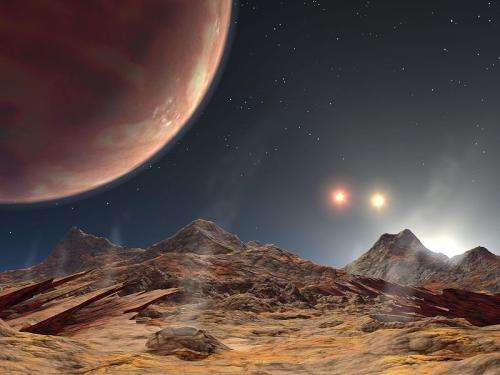Exomoons could be excellent incubators

With the arrival of the Cassini–Huygens mission in 2004 to Saturn’s satellite Titan, we terrestrials became acutely aware that similar moons could be orbiting similarly large planets in other solar systems besides our own. These extrasolar moons, or exomoons, might be a little bit difficult to distinguish with our current equipment, but our technological grasp has greatly improved in recent years. Now current studies suggest that not only can these naturally occurring satellites exist – but they also might be habitable.
As we know, there isn’t exactly a lack of planetary candidates hospitable to life. At least 40 so far discovered are within Earth-like tolerances and it’s only a matter of time before transit timings (TTV and TDV) and wobble variations will allow us to detect their moons. If the potential is there for the giant planet – then why not its companion?
“The satellites of extrasolar planets (exomoons) have been recently proposed as astrobiological targets. Since giant planets in the habitable zone are thought to have migrated there,” says Simon Porter of Lowell Observatory and William Grundy of Arizona State University. “It is possible that they may have captured a former terrestrial planet or planetesimal.”
Although we’re aware of life-possible exoplanet existence, we’re not yet sure of how they got to their current position. Simulations show they may have formed on the edge of where ice can exist, but this might also make them a bit inhospitable. Disk migration would bring them closer to the parent star – but also make them intolerably hot. Yet, there’s a theory which says during the shuffle that some planetesimals could have been “swapped” in the process.
“We therefore attempt to model the dynamical evolution of a terrestrial planet captured into orbit around a giant planet in the habitable zone of a star.” says Porter and Grundy. “We find that approximately half of loose elliptical orbits result in stable circular orbits over timescales of less than a few million years. We also find that those orbits are mostly low-inclination, but have no prograde/retrograde preference.”
Right now the most probable candidates for “living” exomoons would be around planets very similar to Neptune and orbiting a star similar to our Sun. Once these Earth-massed satellites have stabilized into a long-lived orbit, they should be within the range of findability using the transit timing variation much stronger than the duration variation – even if their orbit is tight to the parent planet.
“In addition, we calculate the transit timing and duration variations for the resulting systems, and find that potentially habitable Earth-mass exomoons should be detectable.” reports the team. “Even with these closer orbits, some exomoons are still within the range of detectability. The combination of TTV and TDV may offer a stronger detection signal than photometry for these orbits, though both could detect some of the orbits produced.”
More information: Post-Capture Evolution of Potentially Habitable Exomoons: arxiv.org/pdf/1106.2800v1
Source: Universe Today





















